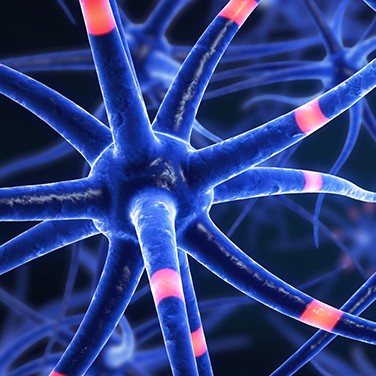MS Research: Fighting the Unknown
By Mike Howie
In 2017, nearly 1 million adults in the United States were living with multiple sclerosis (MS). That estimate, according to a new study, is nearly double the number reported after a national study in 1975, and it highlights the need to learn more about this mysterious and debilitating disease.
The latest study is an important step for MS research that may help those already impacted by the disease and could also lead to a better understanding of its causes. Particularly, the methods used to create the new estimate could help researchers uncover geographic clusters of MS cases that may shed light on other associated demographic and genetic information.
What Causes MS?
While the exact cause of MS is still unknown, many believe it’s triggered by a combination of immunologic, environmental, infectious, and genetic factors.
The immune system is considered to be a key factor in MS — an abnormal immune-mediated response attacks the central nervous system (CNS), damaging its nerves and nerve coatings. This alters or even stops messages from the CNS and leads to a variety of neurological symptoms that can vary from one individual to the next. Researchers have recently identified the immune cells that target the CNS in MS patients, and they’re beginning to understand why they behave the way they do. Eventually, they hope to uncover the ultimate cause of MS.
Several environmental factors have been linked to the risk of developing MS, including smoking, obesity, low vitamin D levels, and geographic location. Some researchers believe that low vitamin D levels and geographic location maybe be connected. MS occurs more frequently in areas far from the equator, where people are exposed to less sunlight throughout the year. The reduced sun exposure leads to lower levels of the naturally produced vitamin D that supports immune function.
Researchers are still working to understand the infectious and genetic factors that may lead to MS. For example, they’ve found that a previous infection with Epstein Barr Virus (EBV, the virus that causes mononucleosis), contributes to the risk of developing MS. And if one identical twin has MS, the other has a 1 in 4 (25 percent) risk of developing the disease — far greater than the probability associated with other first-degree relatives. So far, researchers have identified about 200 genes that appear to contribute to the overall risk of developing MS.
Diagnosing and Treating MS
There is currently no single symptom, physical finding, or lab test that can determine if an individual has MS. However, researchers at Purdue University and the Indiana University School of Medicine have recently found a potential biomarker that could serve as an early warning sign for the disease.
Acrolein, a byproduct of fat metabolism, accumulates in people with certain neurological disorders, including MS and Parkinson’s disease. When examining the correlation between acrolein levels and MS disease activity, the researchers found that MS patients had high levels of the molecule in both their blood and urine. Although low levels of acrolein do not rule out the possibility of having MS, this finding points to the use of acrolein as a potential indicator of more active MS and a way to monitor treatment or design new therapies.
Additionally, MS researchers are investigating a variety of stem cell treatments that could be used to combat the disease. In one example, hematopoietic cells from the patient are harvested and frozen, and the patient’s immune system is then destroyed with high-dose chemotherapy. The patient’s own cells are later reinfused, a step that lessens the potential side effects. Ultimately, researchers hope this treatment will help patients develop a more normally functioning immune system.
While we don’t yet have all the facts about MS, researchers learn more and more about the disease every year in their quest to better understand what causes it, how it can be treated, and if it can be prevented. Their work should ultimately help those affected by MS live healthier lives.
